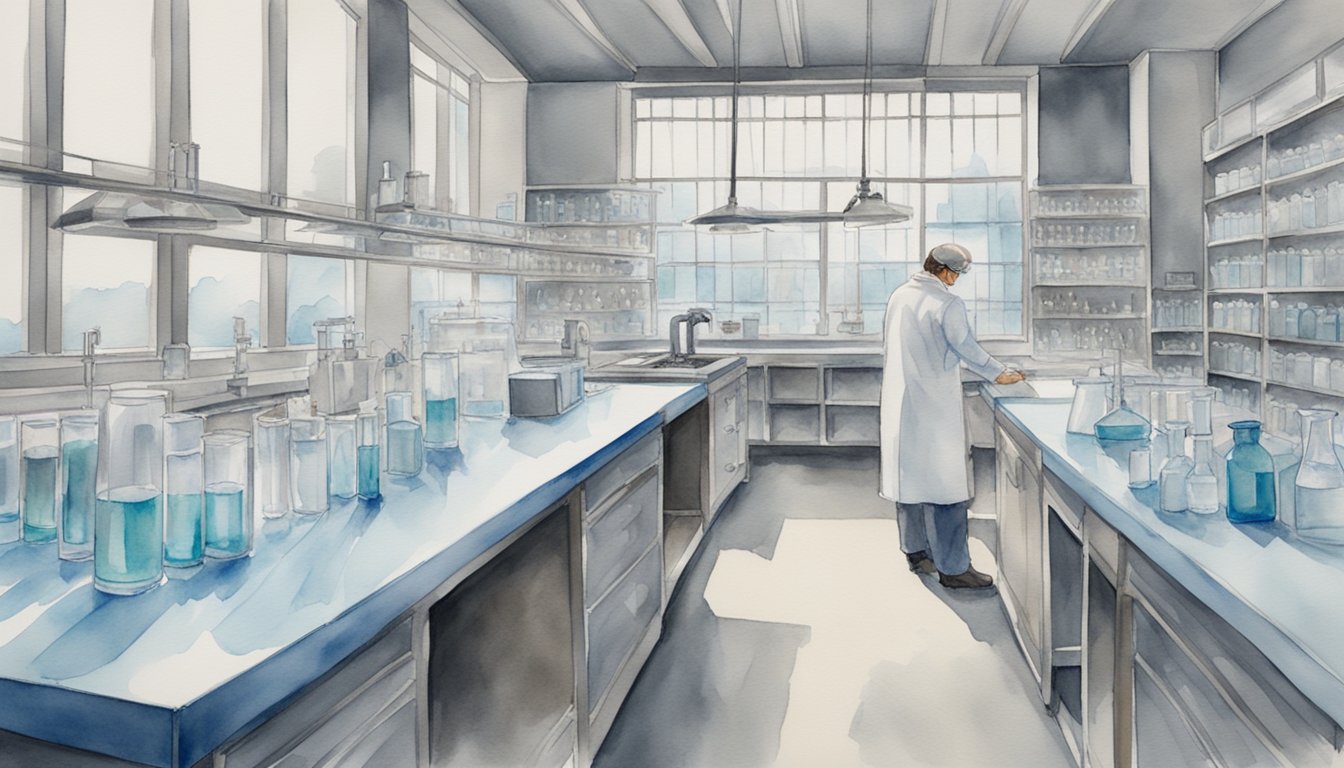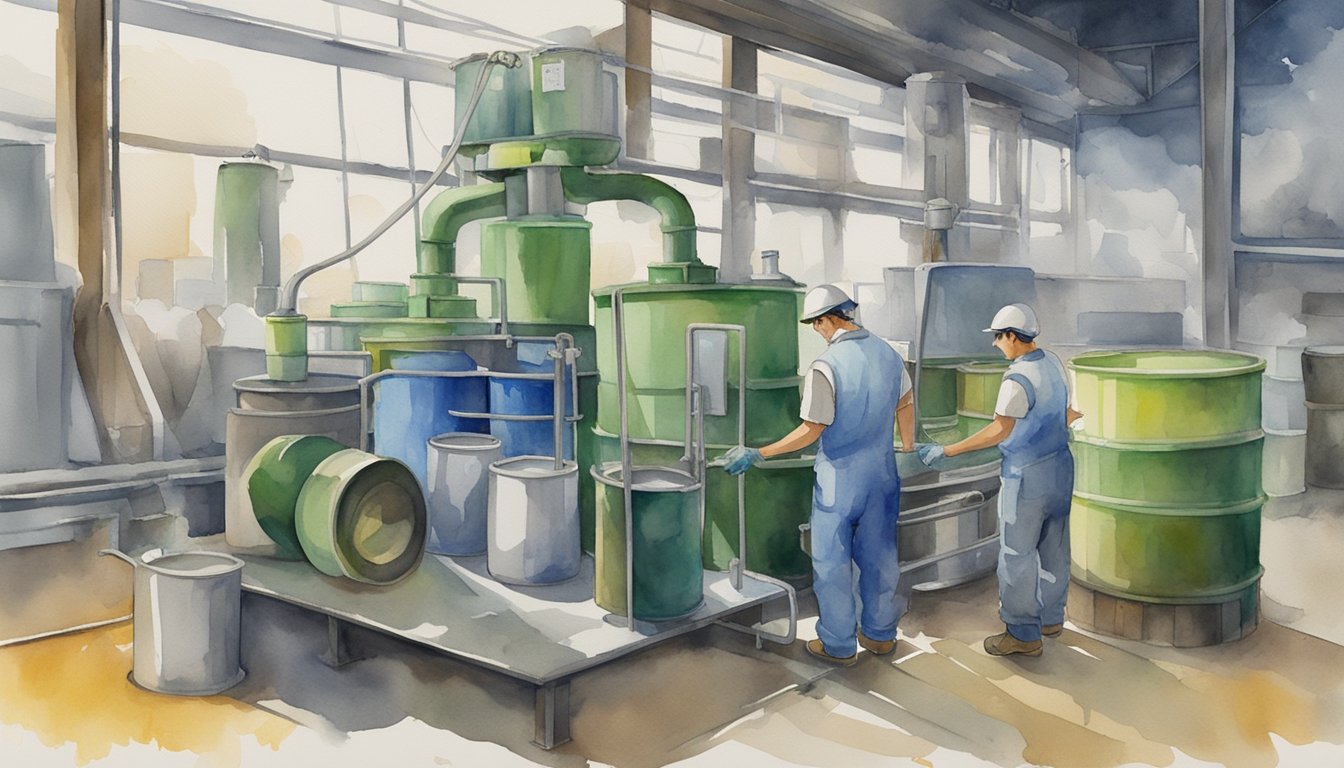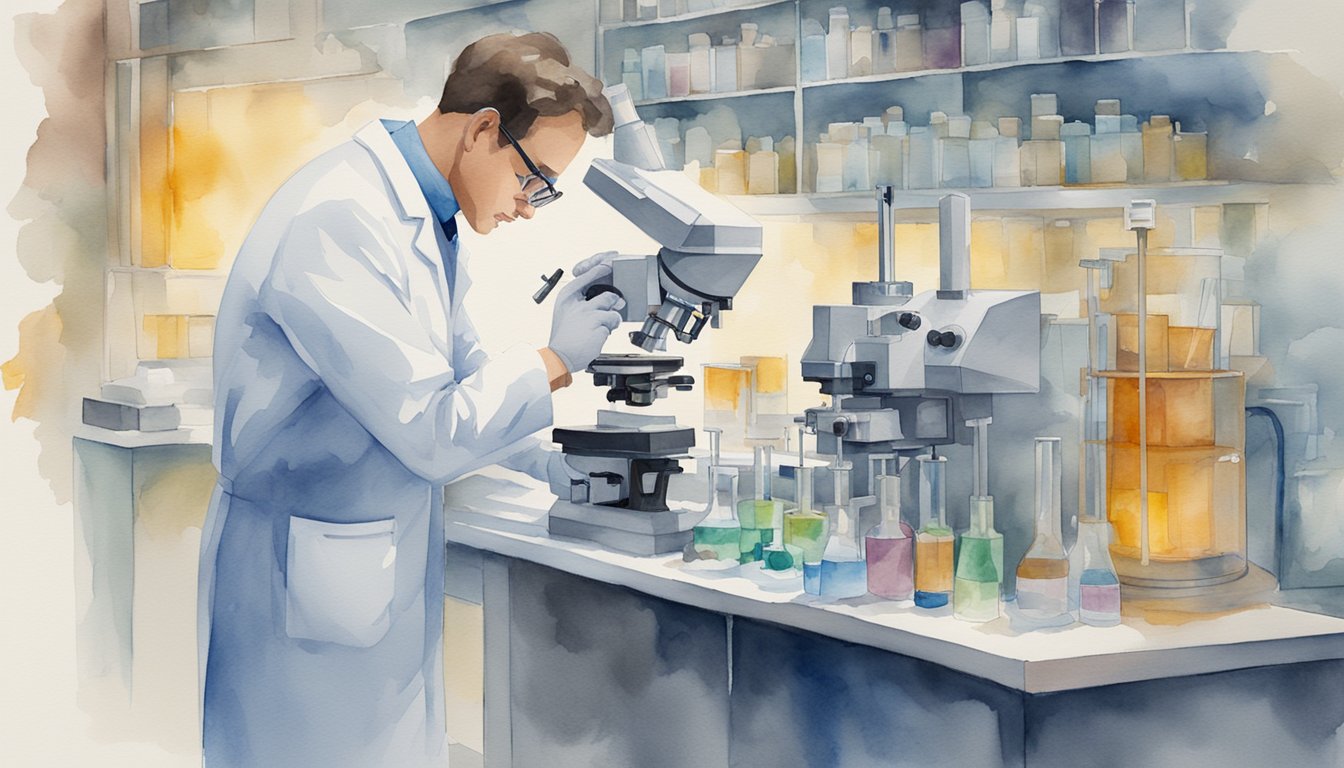Liquid Chromatography-Mass Spectrometry (LC-MS) is best known for its ability to separate, identify, and quantify analytes with unparalleled precision. Liquid chromatography (LC) provides separation capabilities which are then combined with mass spectrometry (MS) for detailed mass analysis. Merging these two methodologies have made it possible for the identification and quantification of complex chemical matrices in ways that did not seem possible a few decades ago. From pharmaceuticals to forensics, a breadth of industries have become reliant upon LC-MS for efficient, precise, and reliable results.
Pharmaceutical Industry Applications
LC-MS shines in drug discovery and development. LC-MS functions to detect and quantify small molecules along with peptides and proteins present in biological samples. LC-MS serves as a valuable tool to identify pesticide residues in agricultural crops and detect food product contaminants while analyzing water quality and environmental trace pollutants.
The pharmaceutical and biotechnology industries depend on LC-MS for their operations. The technology enables new drug creation alongside quality assurance and drug functionality analysis within the body.
Drug Development and Discovery
LC-MS has changed the process of discovering and developing new drugs. Their instruments have made it possible for researchers to screen potential drug candidates and assess drug-target interactions along with stability and purity analysis. Scientists utilize high-throughput LC-MS methods to analyze thousands of compounds quickly and identify molecules that exhibit ideal pharmacokinetic and pharmacodynamic properties. The combination of qualitative and quantitative analyses in early-stage studies lets researchers rapidly eliminate less promising candidates.
Pharmacokinetics and Metabolism Studies
LC-MS represents a significant resource for analyzing pharmaceutical analysis. It allows researchers to analyze drug absorption and distribution throughout the body while identifying drug metabolites and measuring drug amounts in blood and other tissues, improving insights into drug functionality as well as bodily drug processing mechanisms.
After identifying a drug candidate, researchers must study its absorption, distribution, metabolism, and excretion properties. This process establishes how drugs undergo metabolism within the body while revealing their metabolites and clarifying pharmacokinetic properties. LC-MS delivers precise measurements of drug concentrations within biological fluids including plasma and urine. Additionally, analyzing different tissues show drug concentration changes through time that supply vital information for determining safe dosages and evaluating safety.
Therapeutic Drug Monitoring
LC-MS has become a fundamental tool for therapeutic drug monitoring (TDM) when a new drug enters the market to guarantee that patients receive their optimal medication dosage. TDM verifies both patient safety and treatment efficacy in therapies with immunosuppressants or chemotherapeutic agents, especially since these treatments have a narrow therapeutic window.
Clinical and Diagnostic Applications
Medical research and diagnostics now heavily depend on LC-MS as their primary analytical tool. This tool allows for the detection of disease markers while also observing intricate biological samples across numerous clinical and forensic settings.
Biological Matrices Analysis
LC-MS excels at analyzing complex biological samples because it enables simultaneous compound separation and identification. You can quantify drug concentrations and follow their absorption, distribution, and metabolism through routine patient samples like blood and urine as well as cerebrospinal fluid and tissue extracts. This knowledge allows for precise dosing and the creation of effective medications while explaining how compounds interact within the human body.
Disease Biomarkers Detection
The combination of mass spectrometry and liquid chromatography proves superior for discovering measurable indicators of biological conditions known as disease biomarkers. The detection of disease biomarkers remains one of the most important factors in proper disease diagnosis and monitoring disease progression while evaluating responses to treatments. LC-MS systems detect minimal quantities of proteins, metabolites, and other molecules that link to specific health conditions in patient samples. The capabilities of detection extend to cancer markers within blood or tissue samples, hormone levels related to endocrine disorders, and drug metabolites that support personalized medical treatments. Mass spectrometers' high sensitivity allows for the early detection of biomarkers before any symptoms develop.
Forensics, Toxicology, and Drug Testing
The LC-MS/MS technique assists forensic analysis by identifying traces of illicit drugs and poisons present in bodily fluids. The technology identifies prohibited substances within toxicology examinations while assessing drug quantities in bloodstream samples and detecting emerging designer drugs.
The method operates quickly while simultaneously detecting numerous drugs which allows for rapid results in time-sensitive situations. The ability to detect trace compounds stands out as particularly valuable since other techniques like gas chromatography-mass spectrometry (GC-MS) may not identify these substances. LC-MS provides law enforcement agencies with reliable evidence for drug-related criminal investigations and workplace drug screenings.
Environmental Applications
LC-MS safeguards environmental conditions and the health of ecosystems by serving as a powerful instrument for identifying trace amounts of contaminants, pollutants, and pesticides in water, soil, and air. It excels at molecular-level detection with both high sensitivity and specificity for environmental pollutants and traces of illegal, industrial substances.
Detecting Environmental Contaminants
LC-MS serves as an efficient detection method for persistent organic pollutants (POPs), which represent toxic chemicals accumulating in environmental systems that pose risks to human health. This method uses a mass spectrometer to differentiate between similar chemicals which enables researchers to discover new pollutants. Polychlorinated biphenyls (PCBs) and dioxins along with pesticides like DDT serve as examples of POPs.
Water Quality Testing
Maintaining safe drinking water standards represents a major focus in public health protection. Scientists employ LC-MS to identify and measure the levels of pharmaceuticals, pesticides, herbicides and industrial chemicals in aquatic systems. The ability to detect per- and polyfluoroalkyl substances (PFAS) at very low levels helps maintain water safety. Because of its capacity to identify compounds at trace levels, this technique serves as a reliable resource for water quality monitoring programs around the globe.
Soil and Sediment Analysis
Environmental LC-MS applications support researchers with soil and sediment analysis in order to track pollutant movement through different ecosystems. The detection of pesticide residues alongside industrial chemicals and heavy metals constitutes core activities in soil analysis. The LC-MS technique excels at detecting non-volatile substances, which cannot be effectively absorbed by other analytical techniques.
Air Quality Testing
The application of LC-MS in air quality analysis continues to grow particularly for identifying airborne organic compounds. The combination of gas chromatography with mass spectrometry (GC-MS) stands as a well-utilized method to analyze volatile organic compounds yet LC-MS proves superior for examining fine particulate matter and aerosols within air quality assessments. Gas chromatography (GC) serves to absorb numerous volatile and semi-volatile compounds (VOCs and SVOCs), but liquid chromatography-mass spectrometry (LC-MS) assists in their detection. A variety of air-related issues benefit from this application including vehicle emissions and industrial processes as well as other air pollution sources.
Food and Beverage Industry
The food and beverage industry relies heavily on strict regulatory compliance from governmental organizations, such as the FDA, EU, and World Health Organization (WHO). Since food supply chains are complex systems prone to contaminations and misleading health claims, analyzing nutritional facts and ingredients have become a public health priority.
Food Safety Testing
The food industry relies on LC-MS primarily for identifying harmful contaminants in food products. Pesticide residues and mycotoxins along with heavy metals and antibiotic residues present substantial health hazards to consumers. LC-MS serves as an ultra-sensitive detection tool for trace contaminants which helps maintain regulatory compliance and safeguards public health.
Nutrient Profiling
LC-MS serves a dual purpose by detecting contaminants and performing nutrient profiling through the quantification of vitamins, amino acids, fatty acids, and essential nutrients in food products. The data enables producers to create nutritionally superior products while helping consumers select healthier food options.
Food Authentication and Adulteration
The deliberate replacement of premium ingredients with inexpensive substitutes represents an escalating issue throughout food supply chains worldwide. LC-MS serves as a tool for food product authentication to validate their compliance with labeling claims. LC-MS identifies adulteration in foods like olive oil, honey, and wine through the detection of unique chemical signatures which are then compared to established standards.
Industrial Chemistry and Material Science
The field of industrial chemistry applies LC-MS to determine the composition and quality of chemicals and polymers along with other industrial substances.
Polymer and Material Analysis
LC-MS helps polymer industry manufacturers analyze low-molecular weight polymeric compounds such as monomers and additives while optimizing their properties for multiple applications. LC-MS serves as an analytical method to determine polymer degradation through the detection of breakdown products and fragments and to check for impurities or additives like plasticizers or stabilizers to maintain product consistency.
Chemical Purity Testing
Chemical manufacturers frequently use LC-MS to confirm the purity of their raw materials and finished products. The analytical technique identifies impurities and contaminants, which may impact chemical product quality and performance. Fine chemical industries depend on LC-MS technology to uphold strict quality control measures.
Petrochemical Analysis
The petrochemical industry utilizes LC-MS technology for analyzing hydrocarbons and various additives as well as other compounds present in fuel and lubricant formulations. The analysis process improves both the performance and environmental sustainability for petrochemical products by detecting trace levels of sulfur-containing compounds in fuel products, which face stricter regulation due to the increase of air pollution.
Emerging Applications and Future Directions
LC-MS adapts to new scientific and industrial challenges leading to continuous expansion of its application areas.
Personalized Nutrition
The field of nutrition now applies personalized medicine principles by using LC-MS to examine metabolic profiles which lead to individual dietary plans. LC-MS helps build customized nutrition plans that optimize health and prevent disease through studying individual nutrient metabolism.
Cannabis Testing
As cannabis becomes legal across multiple areas it creates a rising demand for precise testing methods for cannabis products. The LC-MS technique examines cannabinoid levels and screens for contaminants like pesticides and heavy metals while maintaining product safety and uniformity.
Key Takeaways:
-
LC-MS integrates chromatography techniques with mass spectrometry to conduct molecular level analysis of intricate mixtures.
-
LC-MS serves multiple applications across pharmaceutical, food, environmental, manufacturing sectors along with emerging industries.
-
LC-MS provides exceptional sensitivity and specificity during the identification and quantification of compounds.
References:
[1] Beccaria, M., & Cabooter, D. (2020). Current developments in LC-MS for pharmaceutical analysis. The Analyst, 145(4), 1129–1157.
[2] Lin, B., Gu, C., Pease, J., & Comstock, K. (2018, August 15). Advanced techniques and applications of LC-MS in small molecule drug discovery - Drug Target Review. Drug Target Review. https://www.drugtargetreview.com/article/12291/advanced-techniques-applications-lc-ms-small-molecule-drug-discovery/
[3] Thomas, S. N., French, D., Jannetto, P. J., Rappold, B. A., & Clarke, W. A. (2022). Liquid chromatography–tandem mass spectrometry for clinical diagnostics. Nature Reviews Methods Primers, 2(1). https://doi.org/10.1038/s43586-022-00175-x
[4] Son, A., Kim, W., Park, J., Park, Y., Lee, W., Lee, S., & Kim, H. (2024). Mass spectrometry advancements and applications for biomarker discovery, diagnostic innovations, and personalized medicine. International Journal of Molecular Sciences, 25(18), 9880.













